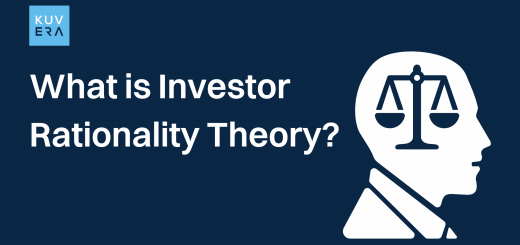The Buy Now, Pay Later (BNPL) scheme has become a buzzword in India’s fintech sector, revolutionizing the way consumers approach purchases. However, as this convenience becomes a staple in Indian shopping habits, it’s crucial to understand both its market impact and the hidden risks. This blog delves into the burgeoning BNPL market in India, backed by recent data, and highlights the need for consumer caution.
The BNPL Market Explosion in India
Recent data indicates a 22.9% annual growth in the BNPL payments, expecting to reach US$14,289.4 million in 2023. This impressive surge is fueled by increased e-commerce penetration and a growing appetite for flexible payment methods, especially in Tier II and Tier III cities.
Growth Trajectory and Future Projections
The BNPL industry in India is not just a fleeting trend. It’s projected to grow at a CAGR of 12.2% from 2023 to 2028, with the Gross Merchandise Value forecasted to soar from US$11,628.8 million in 2022 to US$25,387.2 million by 2028. This robust growth narrative underlines the deepening foothold of BNPL in the Indian financial landscape.
Consumer Adoption and Spending Patterns
BNPL has resonated across various consumer demographics, becoming a default payment choice for many. The method’s ease and flexibility have led to increased consumer spending, particularly during festive seasons. For instance, KreditBee reported a loan disbursement increase of over 100% during the festive season in 2022 compared to the previous year.
The Offline Market Penetration
The demand for BNPL is not confined to online purchases. Companies like Pine Labs have witnessed a surge in BNPL usage for offline payments, with transactions worth INR 50 billion projected in October 2022 alone, indicating a 100% growth compared to average monthly transactions.
Regulatory Measures and Market Response
Despite recent regulatory measures by the Reserve Bank of India impacting BNPL operations, the sector continues to thrive. However, these regulations highlight the need for consumer protection and responsible lending practices in the rapidly expanding BNPL space.
BNPL in the Travel Industry
Post-pandemic, there’s a noticeable shift in BNPL usage towards the travel industry. Strategic alliances, like the one between CASHe and IRCTC, offering ‘travel now pay later’ services, have opened new avenues for BNPL growth. SanKash’s 102% increase in travel loan amount in Q2 FY23 compared to Q1 FY23 exemplifies this trend.
Why you should be cautious of BNPL?
- Increased Risk of Overspending: BNPL schemes make it easy for consumers to buy products immediately without paying upfront, which can lead to impulse purchases and spending beyond one’s means. This perceived affordability often masks the true cost of purchases.
- Accumulation of Debt: Consumers can quickly find themselves in a cycle of debt, especially if they use multiple BNPL services simultaneously. Each deferred payment is a financial commitment, and the aggregate of these commitments can become overwhelming.
- Impact on Credit Score: While some BNPL providers do not conduct credit checks, missed or late payments can still impact a consumer’s credit score. This can have long-term implications for future loan approvals and interest rates.
- Hidden Fees and Charges: Some BNPL services may include hidden fees, such as late payment fees, which can add up quickly. Consumers might not always be aware of these additional charges at the time of purchase.
- Regulatory Uncertainties: The BNPL market in India is still evolving, and regulatory policies are catching up. This could lead to changes in how these services operate, potentially affecting consumers who have already entered into BNPL agreements.
- Lack of Consumer Protection: Unlike traditional credit products, BNPL services may not always offer the same level of consumer protection, leaving users vulnerable to unfair practices.
- Short-Term Relief, Long-Term Burden: BNPL offers immediate financial relief but can lead to long-term financial strain if not managed properly. It encourages the habit of living beyond one’s means.
- Misleading Financial Planning: BNPL can give a false sense of financial security. Consumers might think they are managing their finances well by deferring payments, but in reality, they may be setting themselves up for financial distress.
- Vulnerability to Economic Shifts: In times of economic downturn, consumers who over-leverage through BNPL might find it challenging to fulfill their repayment obligations, leading to financial stress.
- Consumer Education Gap: There is often a gap in consumer understanding of BNPL services. The lack of financial literacy regarding the implications of deferred payments can lead to uninformed decisions and financial mishaps.
The Risks and Consumer Caution
While BNPL offers immediate gratification and convenience, it carries the risk of leading consumers into overspending and accruing unmanageable debts. The ease of acquiring multiple BNPL loans can result in a debt trap, especially among consumers who may not fully comprehend the long-term financial implications.
Conclusion
The BNPL market in India is a dynamic and growing sector with significant consumer appeal. However, with this growth comes the responsibility for both providers and consumers to engage with these services wisely. Consumers, in particular, need to be mindful of their spending habits and the potential for accumulating debt. As the market continues to evolve, it will be crucial to balance the benefits of BNPL with financial prudence and responsibility.
Interested in how we think about the markets?
Read more: Zen And The Art Of Investing
Watch/hear on YouTube:
Start investing through a platform that brings goal planning and investing to your fingertips. Visit Kuvera.in to discover Direct Plans and Fixed Deposits and start investing today.











